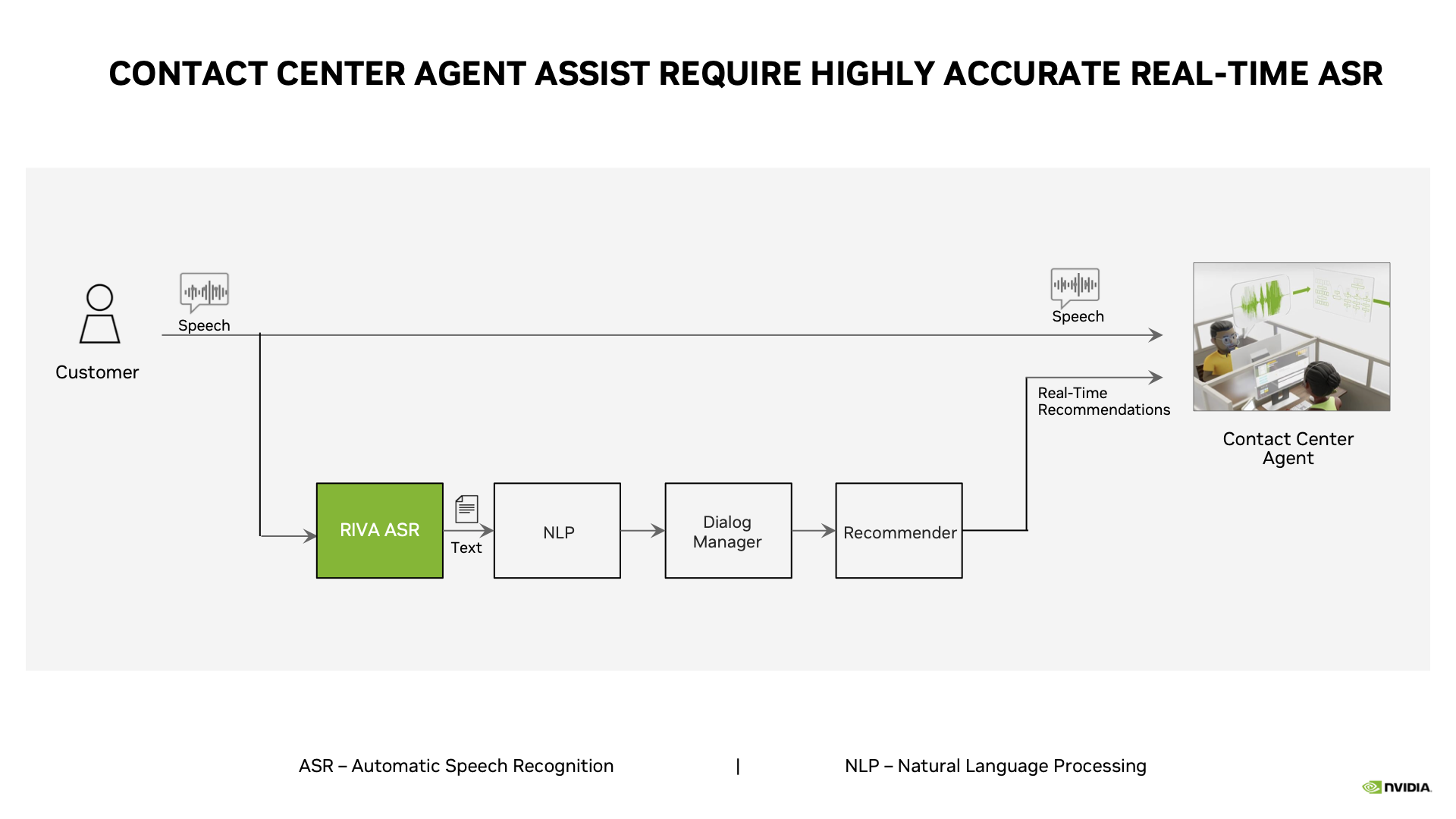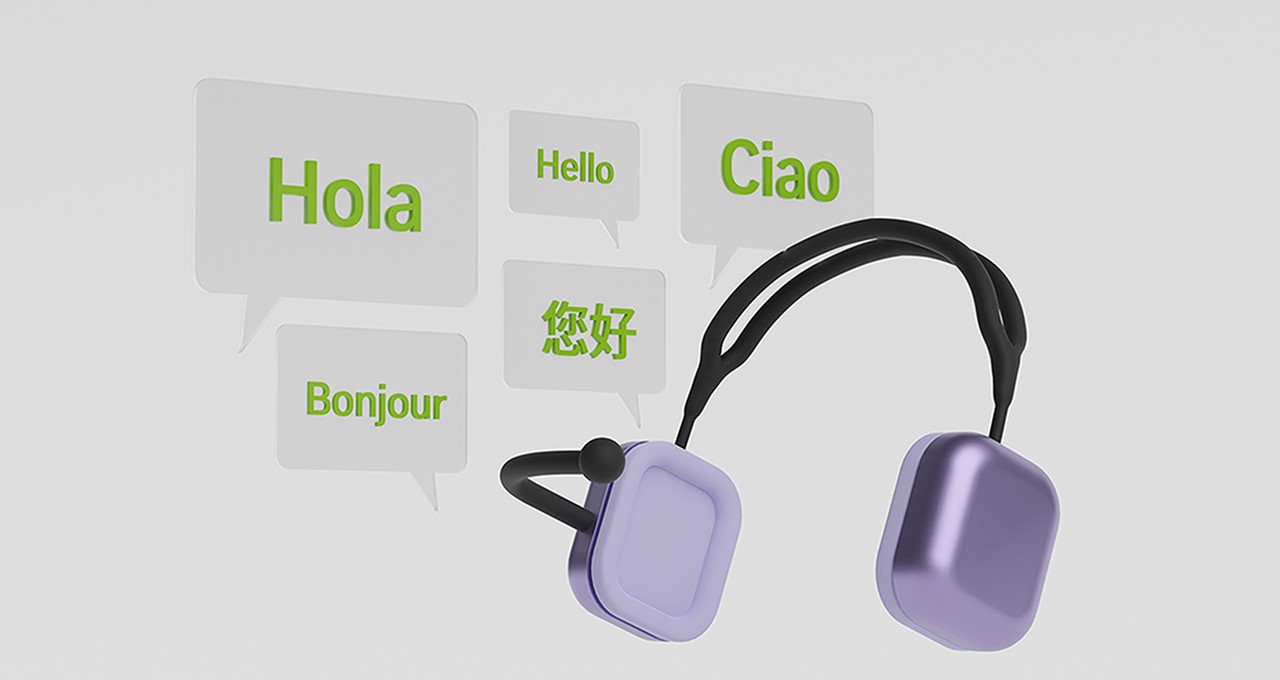“Please hold” may be the two words that customers hate most — and that contact center agents take pains to avoid saying.
Providing fast, accurate, helpful responses based on contextually relevant information is key to effective customer service. It’s even better if answers are personalized and take into account how a customer might be feeling.
All of this is made easier and quicker for human agents by what the industry calls agent assists.
Agent assist technology uses AI and machine learning to provide facts and make real-time suggestions that help human agents across telecom, retail and other industries conduct conversations with customers.
It can integrate with contact centers’ existing applications, provide faster onboarding for agents, improve the accuracy and efficiency of their responses, and increase customer satisfaction and loyalty.
How Agent Assist Technology Works
Agent assist technology gives human agents AI-powered information and real-time recommendations that can enhance their customer conversations.
Taking conversations as input, agent assist technology outputs accurate, timely suggestions on how to best respond to queries — using a combination of automatic speech recognition (ASR), natural language processing (NLP), machine learning and data analytics.
While a customer speaks to a human agent, ASR tools — like the NVIDIA Riva software development kit — transcribe speech into text, in real time. The text can then be run through NLP, AI and machine learning models that offer recommendations to the human agent by analyzing different aspects of the conversation.

First, AI models can evaluate the context of the conversation, identify topics and bring up relevant information for the human agent — like the customer’s account data , a record of their previous inquiries, documents with recommended products and additional information to help resolve issues.
Say a customer is looking to switch to a new phone plan. The agent assist could, for example, immediately display a chart on the human agent’s screen comparing the company’s offerings, which can be used as a reference throughout the conversation.
Another AI model can perform sentiment analysis based on the words a customer is using.
For example, if a customer says, “I’m extremely frustrated with my cellular reception,” the agent assist would advise the human agent to approach the customer differently from a situation where the customer says, “I am happy with my phone plan but am looking for something less expensive.”
It can even present a human agent with verbiage to consider using when soothing, encouraging, informing or otherwise guiding a customer toward conflict resolution.
And, at a conversation’s conclusion, agent assist technology can provide personalized, best next steps for the human agent to give the customer. It can also offer the human agent a summary of the interaction overall, along with feedback to inform future conversations and employee training.
All such ASR, NLP and AI-powered capabilities come together in agent assist technology, which is becoming increasingly integral to businesses across industries.
How Agent Assist Technology Helps Businesses, Customers
By tapping into agent assist technology, businesses can improve productivity, employee retention and customer satisfaction, among other benefits.
On average, agent assist technology helps increase productivity for human agents by 14%, according to a recent study at the National Bureau of Economic Research.
For one, agent assist technology reduces contact center call times. Through NLP and intelligent routing algorithms, it can identify customer needs in real time, so human agents don’t need to hunt for basic customer information or search databases for answers.
Leading telecom provider T-Mobile — which offers award-winning service across its Customer Experience Centers — uses agent assist technology to help tackle millions of daily customer care calls. The NVIDIA NeMo framework helped the company achieve 10% higher accuracy for its ASR-generated transcripts across noisy environments, and Riva reduced latency for its agent assist by 10x. (Dive deeper into speech AI by watching T-Mobile’s on-demand NVIDIA GTC session.)
Agent assist technology also speeds up the onboarding process for human agents, helping them quickly become familiar with the products and services offered by their organization. In addition, it empowers contact center employees to provide high levels of service while maintaining low levels of stress — which means higher employee retention for enterprises.
Quicker, more accurate conflict resolution enabled by agent assist also leads to more positive contact center experiences, happier customers and increased loyalty for businesses.
Use Cases Across Industries
Agent assist technology can be used across industries, including:
- Telecom — Agent assist can provide automated troubleshooting, technical tips and other helpful information for agents to relay to customers.
- Retail — Agent assist can suggest products, features, pricing, inventory information and more in real time, as well as translate languages according to customer preferences.
- Financial services — Agent assist can help detect fraud attempts by providing real-time alerts, so that human agents are aware of any suspicious activity throughout an inquiry.
Minerva CQ, a member of the NVIDIA Inception program for cutting-edge startups, provides agent assist technology that brings together real-time, adaptive workflows with behavioral cues, dialogue suggestions and knowledge surfacing to drive faster, better outcomes. Its technology — based on Riva, NeMo and NVIDIA Triton Inference Server — focuses on helping human agents in the energy, healthcare and telecom sectors.
History and Future of Agent Assist
Predecessors of agent assist technology can be traced back to the 1950s, when computer-based systems first replaced manual call routing.
More recently came intelligent virtual assistants, which are usually automated systems or bots that don’t have a human working behind them.
Smart devices and mobile technology have led to a rise in the popularity of these intelligent virtual assistants, which can answer questions, set reminders, play music, control home devices and handle other simple tasks.
But complex tasks and inquiries — especially for enterprises with customer service at their core — can be solved most efficiently when human agents are augmented by AI-powered suggestions. This is where agent assist technology has stepped in.
The technology has much potential for further advancement, with challenges including:
- Developing methods for agent assists to adapt to changing customer expectations and preferences.
- Further ensuring data privacy and security through encryption and other methods to strip conversations of confidential or sensitive information before running them through agent assist AI models.
- Integrating agent assist with other emerging technologies like interactive digital avatars, which can see, hear, understand and communicate with end users to help customers while boosting their sentiment.
Learn more about NVIDIA speech AI technologies.
Additional resources:
- Webinar: How Telcos Transform Customer Experiences With Conversational AI.
- Webinar: Empower Telco Contact Center Agents With Multi-Language Speech-AI-Customized Agent Assists.
- On-Demand NVIDIA GTC Sessions: T-Mobile and AT&T
- Customer Story: T-Mobile
